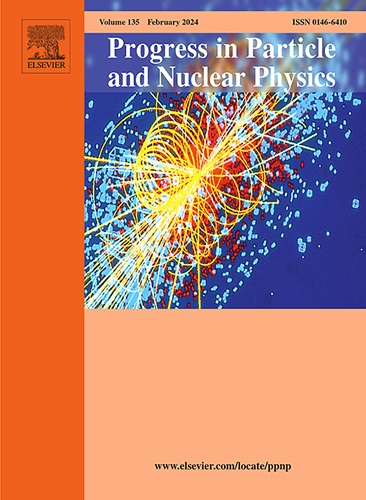Strongly interacting matter in extreme magnetic fields
IF 17.9
2区 物理与天体物理
Q1 PHYSICS, NUCLEAR
引用次数: 0
Abstract
Magnetic fields are ubiquitous across different physical systems of current interest; from the early Universe, compact astrophysical objects, and heavy-ion collisions to condensed matter systems. A proper treatment of the effects produced by magnetic fields during the dynamical evolution of these systems can help to understand observables that otherwise show puzzling behavior. Furthermore, when these fields are comparable to or stronger than , they serve as excellent probes to help elucidate the physics of strongly interacting matter under extreme conditions of temperature and density. This work provides a detailed report that contains in-depth analysis and expert insights into the specific topic of the effects of strong magnetic fields on QED and QCD systems. In this sense, the report is intended as a white paper contribution to the field. The subjects developed include the modification of meson static properties such as masses and form factors, the chiral magnetic effect, the description of anomalous transport coefficients, superconductivity in extreme magnetic fields, the properties of neutron stars, the evolution of heavy-ion collisions, as well as effects on the QCD phase diagram. We describe recent theory and phenomenological developments using effective models as well as LQCD methods. The work was motivated by presentations and discussions during the “Workshop on Strongly Interacting Matter in Strong Electromagnetic Fields” that took place in the European Centre for Theoretical Studies in Nuclear Physics and Related Areas (ECT*) in the city of Trento, Italy, September 25–29, 2023.
极端磁场中的强相互作用物质
磁场在当前感兴趣的不同物理系统中无处不在;从早期宇宙、致密天体、重离子碰撞到凝聚态物质系统。在这些系统的动态演化过程中,对磁场产生的效应进行适当的处理,有助于理解那些否则会表现出令人费解的行为的可观察到的现象。此外,当这些场与ΛQCD相当或更强时,它们可以作为极好的探针,帮助阐明在极端温度和密度条件下强相互作用物质的物理学。这项工作提供了一份详细的报告,其中包含对强磁场对QED和QCD系统影响的具体主题的深入分析和专家见解。从这个意义上说,该报告旨在作为该领域的白皮书。研究课题包括介子质量和形状因子等静态性质的改变、手性磁效应、异常输运系数的描述、极端磁场下的超导性、中子星的性质、重离子碰撞的演化以及对QCD相图的影响。我们用有效的模型和LQCD方法描述了最近的理论和现象学发展。这项工作的动机是在“强电磁场中强相互作用物质研讨会”期间的演讲和讨论,该研讨会于2023年9月25日至29日在意大利特伦托市的欧洲核物理和相关领域理论研究中心(ECT*)举行。
本文章由计算机程序翻译,如有差异,请以英文原文为准。
求助全文
约1分钟内获得全文
求助全文
来源期刊

Progress in Particle and Nuclear Physics
物理-物理:核物理
CiteScore
24.50
自引率
3.10%
发文量
41
审稿时长
72 days
期刊介绍:
Taking the format of four issues per year, the journal Progress in Particle and Nuclear Physics aims to discuss new developments in the field at a level suitable for the general nuclear and particle physicist and, in greater technical depth, to explore the most important advances in these areas. Most of the articles will be in one of the fields of nuclear physics, hadron physics, heavy ion physics, particle physics, as well as astrophysics and cosmology. A particular effort is made to treat topics of an interface type for which both particle and nuclear physics are important. Related topics such as detector physics, accelerator physics or the application of nuclear physics in the medical and archaeological fields will also be treated from time to time.
 求助内容:
求助内容: 应助结果提醒方式:
应助结果提醒方式:


